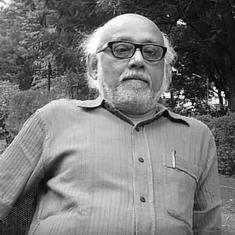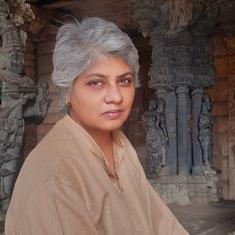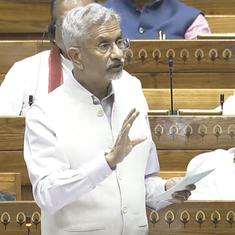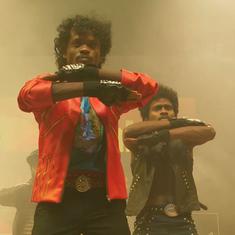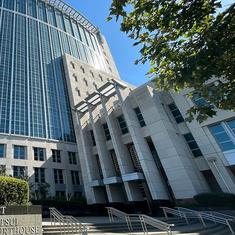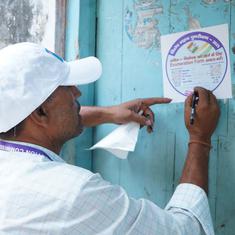Everyone who lives in, thinks of, remembers, and writes about Punjab, imagines an entity that is particular to them. This is because the historical and territorial imaginary that is Punjab has been politically and spatially unstable and mutating; though from early times, the region’s identity has remarkably been cast around its rivers and doabs. Thus, from the two Punjab-s, Indian and Pakistani, post the brutal Partitioning of colonial Punjab in 1947; to the state re-structuring of 1966 after the demand for “Punjabi Suba”; to the imaginings of a “Sikh/Khalsa” homeland from the 1980s to the mid-1990s, often with the support of Sikhs from the global diaspora; or those for whom Partition meant the loss of a territory called homeland as for “Punjabi Hindus” of Delhi, or the “Hindu Punjabis” of the British diaspora; what Punjab means to whom may vary. In the same vein, what one holds dear about Punjab, the sense of belonging and the embracing of a “Punjabiness” or Punjabiyat, the ambiguous term imbricated in affect, and charged with emotional and cultural investment, is hailed variously by people. Territory, culture, language, religion, caste, or even a primordial affiliation beyond or a hybrid of these taxonomies, may be invoked to adumbrate the term’s layered complexity. Punjabiyat, lodged under the skin, seeped into the being, and granularly experienced, exceeds and encompasses the myriad qualities it evokes.
The title of this book, Punjabi Centuries, harks back to one such imagination; that of Prakash Tandon (b.1911), when he published Punjabi Century in 1961, giving account of Punjab of his inheritance, knowledge and experience, of 1857-1947. The specificities of his own social and cultural context shaped what he wrote, just as he fashioned his past in a particular, articulate, and performative self-presentation. He was a Hindu Khatri from the town of Gujrat on the banks of River Jhelum, who as a child traversed with his parents many towns and villages of the newly settled Canal Colonies. He travelled to England for higher education, coming back to work in India along with his Swedish wife. After his father retired from serving the colonial government’s irrigation department, he helped to settle his parents in Lahore’s Model Town, where eventually he… had also hoped to retire. The trauma of Partition permanently tore Lahore and Gujrat from their lives. The Punjab of Tandon’s inscriptions was “West” Punjab, a Punjab he lamented was snatched forever from him, as his family moved to “Hindustan” – to Delhi and later Bombay. The enormity of Tandon’s loss is best captured in his own words:
Today we have no one left in Gujrat. All the Hindus came away at partition. It is strange to think that in all the land between Ravi and Chenab, from Chenab to Jhelum, from Jhelum to Indus, in the foothills and in the plain down to Panjnad, where the five rivers eventually merge, land which had been the homes of our biradaries since the dawn of history, there is no one left of our kind.
Yet, Tandon’s wrenching from Punjab, eloquently described in the trope of the flow and confluence of its rivers, remembered in the brotherhood of the ancestral town, and bemoaned in the alienation of people of his ilk from it, was not permanent. One may say that his Punjabiyat asserted itself, and he wrote two more volumes that in some ways connected him to Punjab – Beyond Punjab and Return to Punjab – assembled together in the Punjabi Saga.
The tale of Tandon’s continuous relationship with Punjab – lived, cleaved, abandoned, reconnected – could be the story of many others. In this Introduction, I use Tandon’s reminiscences, along with those of others like Lajpat Rai, Ruchi Ram Sahni, and more, as gateways to enter the histories and cultures of Punjab. The ostensible privileging of a few voices must be seen as a conduit to lead into diverse Punjab(s); the anchoring in the memoirs is a literary and historical device that propels a conversation with the past. The memoirs are written from given caste, class and community viewpoints and therefore have their limitations; they are also steeped in epistemologies that encouraged privileged men to narrate their (public) lives. However, for all the construction of purposive subjectivities and hegemonic ambitions, these memoirs are not devoid of interest: in what they say, are silent about, what they want us to see, what they hide….
So, what makes Tandon’s work attractive? Tandon, as noted, wrote from a specific perspective. He was a high-caste Hindu Khatri, the sort who made the best of what they saw as opportunities opened for people like them under colonialism – his use of the phrase from his history textbook “angrezi raj ki barkaten,” – the blessings of the English rule – steeped in the logics of colonial historiography, resonated with many of his generation.
Tandon’s was an insider’s ethnographic account of the ways of the Khatris: their towns, homes and architecture, customs and rituals, but most of all, how they took to colonial education and professions like fish to water. Such ethnographic writing mimicked the British administrator-ethnographers like Horace Arthur Rose, Denzil Ibbetson, or Malcolm Darling, and more, and carried sociological and antiquarian interests. Writing with an ethnographic bent itself was not new. Ganesh Das Badhera’s fabulous Char Bagh-i-Panjab (1849) was written petitioning the British for considering the case of the Khatris as educated and proficient professionals…. its worldview was pre-modern. This can be seen in the enchantments of the holy and learned personages of different localities of Punjab that unfold in his pages; his interweaving of Punjabi romantic qisse within his topographical mapping of Punjab, a making of potent mythos-history; along with attention to his own genealogy. Genealogy was a salient form of knowledge, of apprehending and connecting to one’s past.
A striking reason for Tandon’s success with Punjabi Century was the spirit of joie de vivre and Punjabi indomitability that pervades its pages. Punjabis, whatever the circumstances, Tandon seems to suggest, make the most of life and chances given; even after Partition – as Ravinder Kaur notes – mythologising Punjabi hardiness and success.
Significantly, this esprit de corps has come to be an aspect of Punjabiyat itself, lending its sheen to Punjabis. These include “agricultural” Jats and Jat Sikhs: the beneficiaries of the colonial state’s indulgence with regards to entitlement to land, and later in postcolonial Punjab of the green revolution; the soldiers in the British Indian Army; the Punjabi Muslim landlords of vast tracts in Canal Colonies; the “non-agricultural” Hindu and Muslim urban middle-classes; and the diasporic Punjabis, sometimes even Dalits, at least those who made their fortunes in leather manufacturing and trading in the early twentieth century, or through migrating abroad. Perhaps this self-aggrandising myth has helped Punjabis survive different dislocations.
The longevity of this myth and its ownership by the Punjabis, therefore, makes it difficult to comprehend and easy to overlook the fragile and fragmented lives of many Punjabis earlier and now: for example, the pastoral and other inhabitants of Punjabi bars and scrubland of colonial Punjab; the young Sikh men, the “sent away boys” who migrated to escape the violence of the Indian state post the operation Blue Star in 1984; the farmers committing suicide in contemporary Indian Punjab; and more recently of their fears of new farm laws and the power of corporates on their produce, their wives burdened with unpaid debts; Dalits fighting for dignity and recognition of their contribution to histories of Punjab and Sikhism; and others. Punjabi identity, then, is complex, contingent, and ever-reconfiguring.
A complex portrayal of making language choices comes from the memoirs of Lala Lajpat Rai (b 1865), the Agrawal Bania nationalist leader from Punjab, tied life-long ideologically to the Arya Samaj, the Hindu reformist organisation that wished to recreate the achievements of a celebrated Vedic past. Rai’s Atma Katha published in chaste Hindi in the Devanagari script almost unconsciously Rai adumbrates a psychological conflict with his father, Radha Krishan, a government school teacher of Farsi, who had studied in a Farsi madrassa established by the British.
The conflict with pater unfolds on the question of language: which language was to be adopted, owned, propagated? Rai, depicts his father as attracted to Islam, deeply impressed with the Koran, who read namaz and kept roza, and though he never converted to Islam, or openly became a Muslim – khulamkhula Musalman – it was because of the fear that his wife would leave him with their children. In his account of his father, it is Rai’s mother who emerges as the hero. She was from a kesdhari. Sikh family with one of her brothers being a granthi…. It is she who is shown to be patient and tolerant of her husband’s Islamic bent and Muslim friends, as of maintaining staunch (kattar) Hindu ritualistic practice at home. Rai entered public life in his teens around 1882 at the time of Hindi-Urdu controversy in North India. A repetitious note of the language politics of Punjab and his father’s love for Farsi and Arabic features in the Atma Katha. Rai also laments his inability to learn Sanskrit.

Excerpted with permission from Punjabi Centuries: Tracing Histories of Punjab, edited by Anshu Malhotra, Orient Black Swan.

